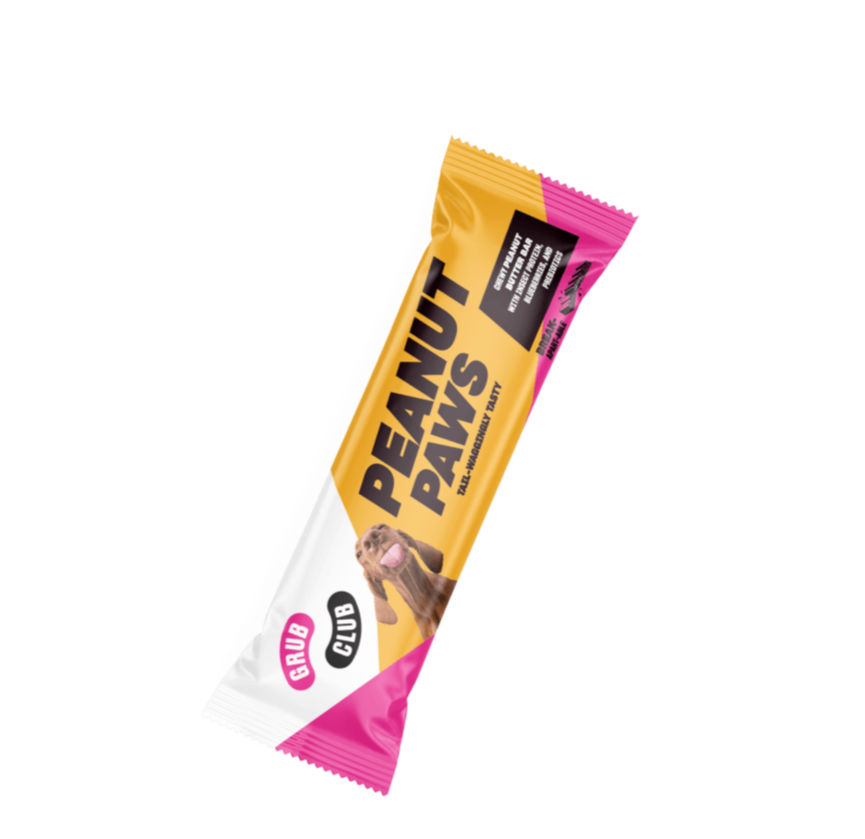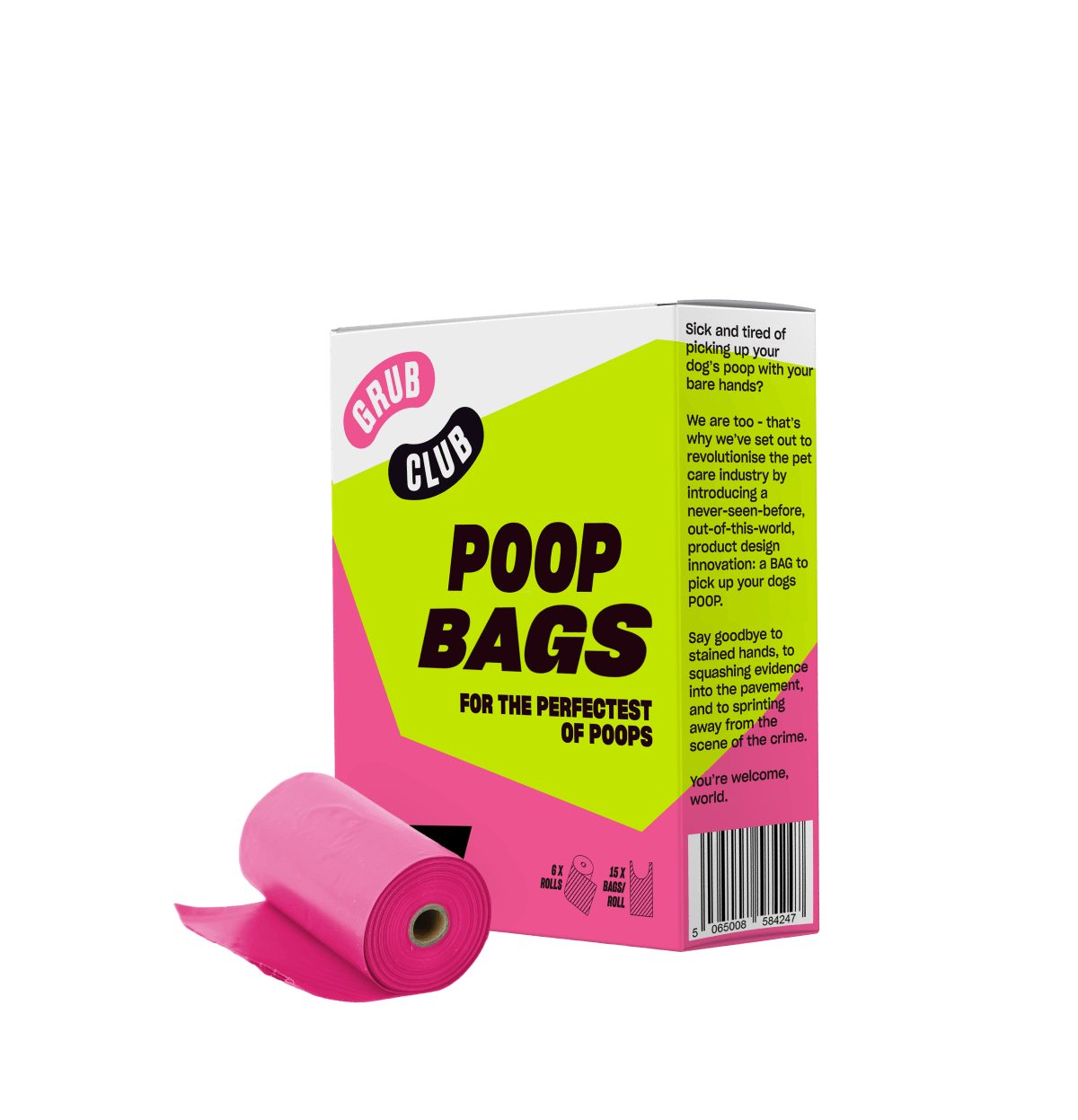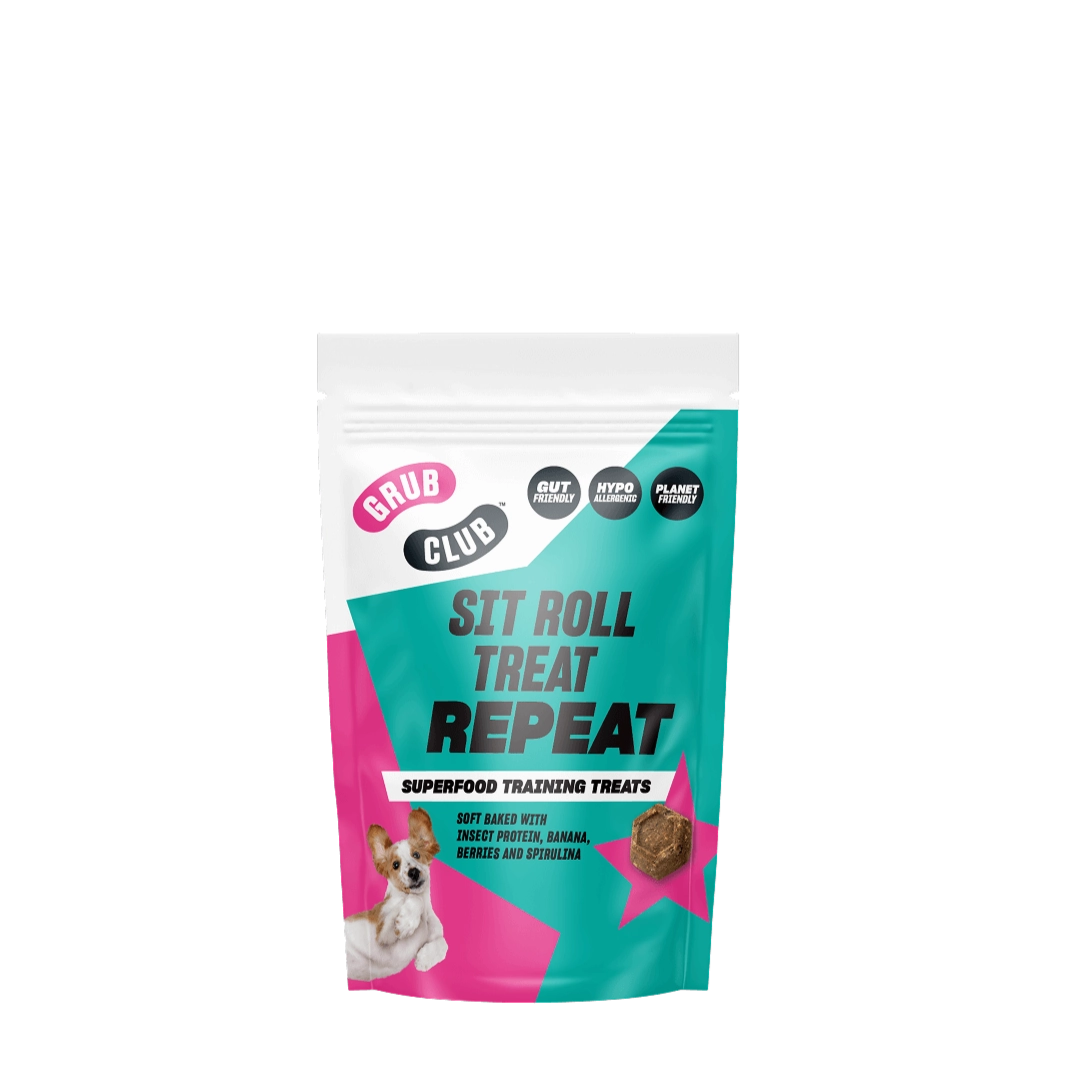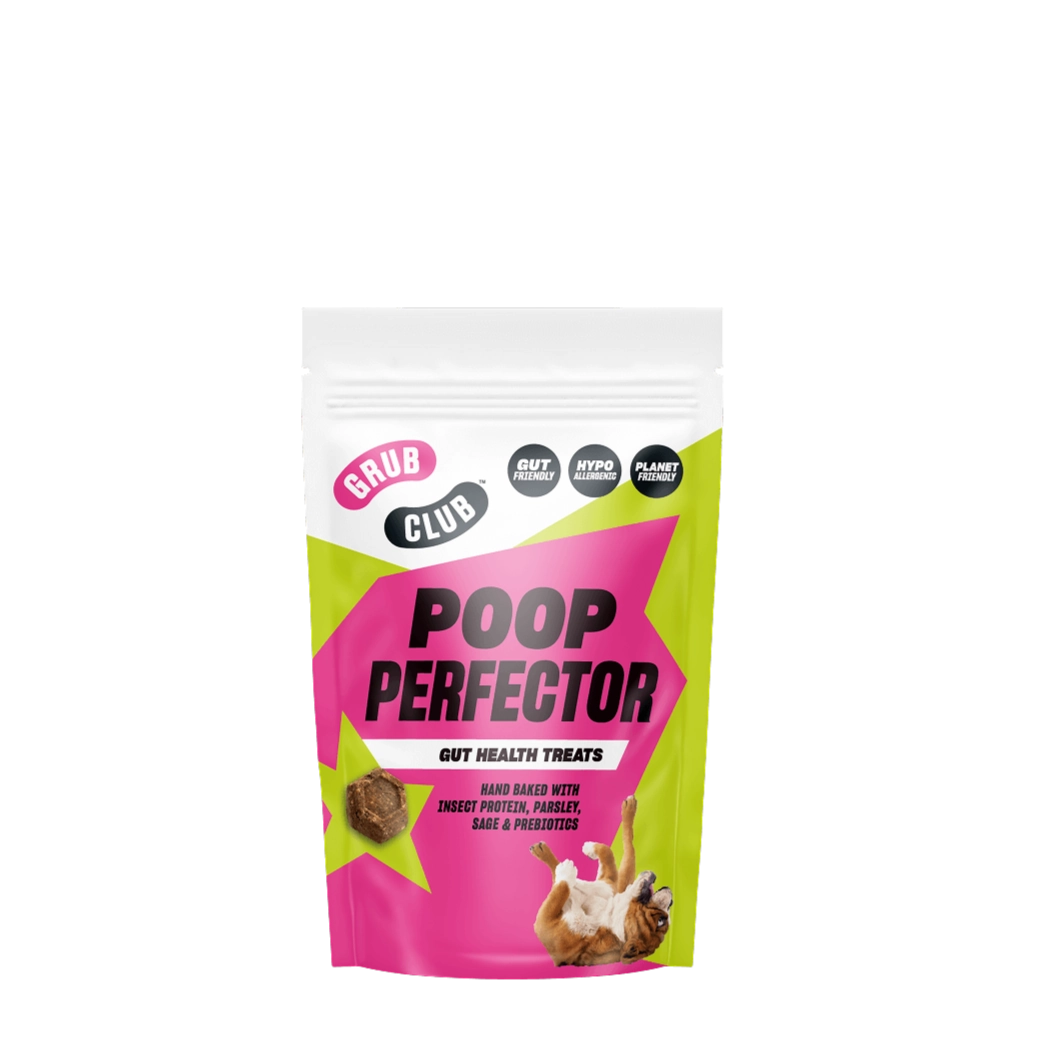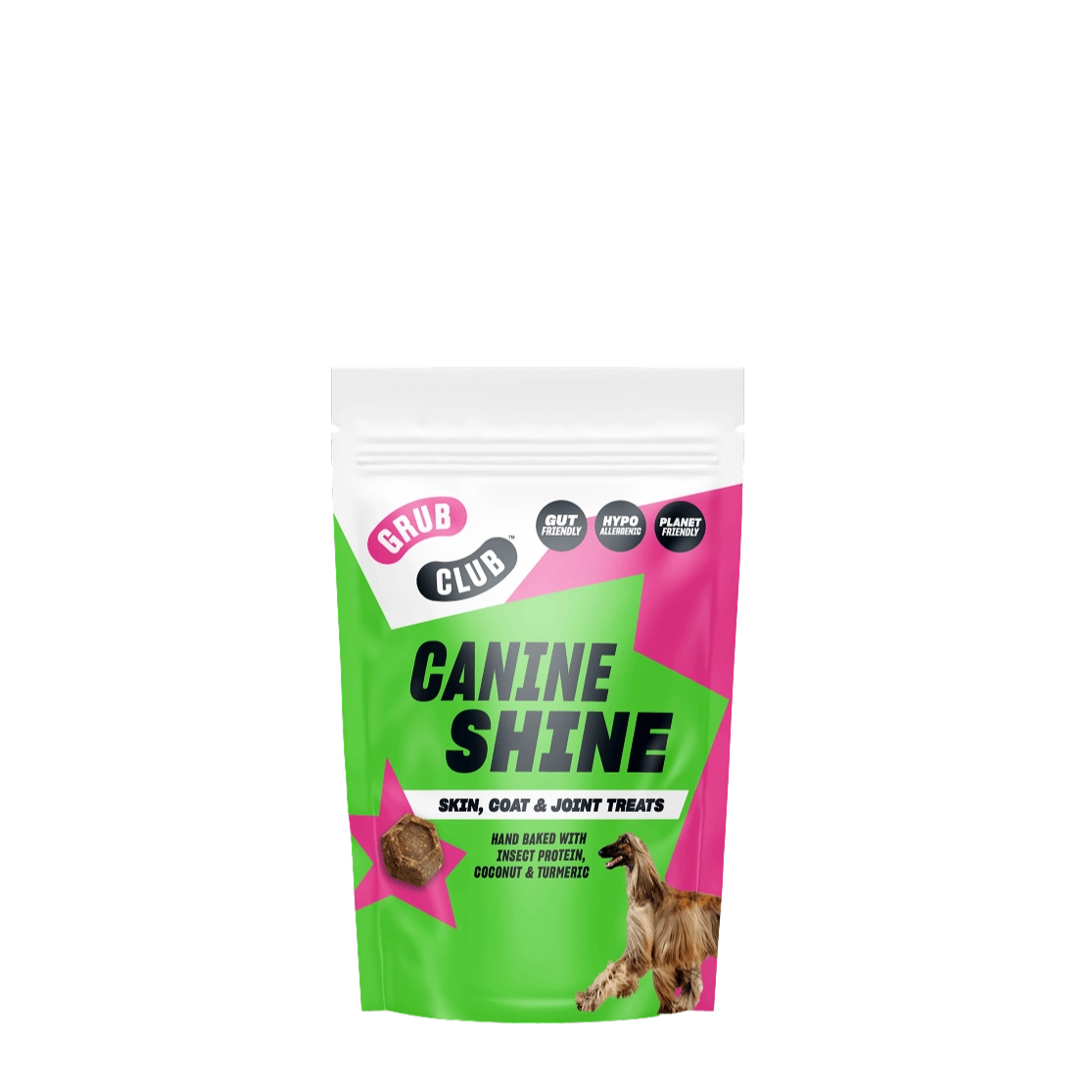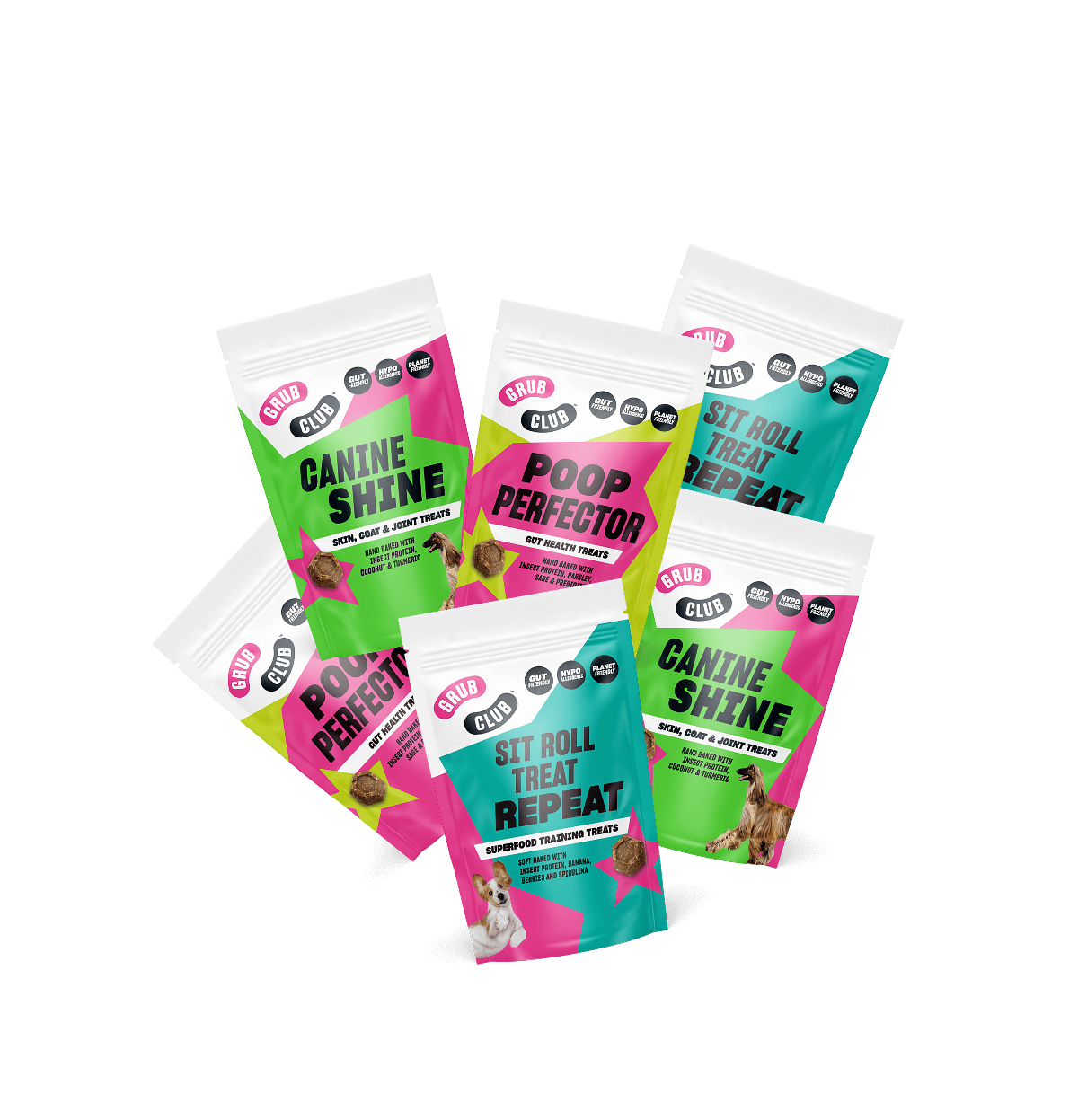Top Dog: All-In-One
Supplement for Snout-to-Tail Wellness
60 Scoops
FREE UK Delivery on orders above £49.
You have £0.00 in your cart, spend £49.00 more and get free shipping.
60 Scoops
1 Bar
72 Bags
1 Pack
1 Pack
1 Pack
Or continue without a name
CheckoutConcerned about your dog’s weight? You're not alone. As our veterinary nurse Charlotte mentioned in this video, nearly half of the UK dog population is now classified as 'overweight'.
Can you identify the signs of obesity in dogs? Are you looking for advice on keeping your dog fit, happy and at a healthy weight? Wotcha! You're in the right place. Here at Grub Club, we're passionate about good diets and tip top pet health. We share what you can do as a pet owner, to keep your four-legged friend a lean, mean, barking machine.
Just like humans, dogs carrying excess weight can lead to health and mobility issues which may limit their lifespan and lead to increased medical bills – something we could all do without right now. Let’s delve into the solutions…
As a rule of thumb, dogs are considered 'overweight' when they weigh 10-20% more than their ideal body weight.
Dogs are considered 'obese' when they weigh 20% or more than their ideal body weight.
Another way to determine whether your dog is overweight or obese is to look at what your breed of dog should typically look like. This can usually be found in dog breed books or with a quick Google search. Breed-related Facebook groups can also be very helpful (and a great way of making new friends!).
Of course, not every dog will adhere to their breed’s standard body shape (height, length, cross breed features) but you should be able to get a good idea of an ideal weight from some of the images that crop up. This helpful dog breed weight chart is also a handy resource to refer to.
In general, if your dog is obese you will notice that:
The main cause of obesity is simply due to the fact that your dog is not getting enough exercise paired with overfeeding (treats, snacks, table scraps/leftovers). Other factors that can come into play include medical problems, breeding, type of breed (some breeds hold more fat than others) and neutering.

Before taking any drastic measures to your dog's diet, we suggest booking a visit to your vet for a full health check. They will be able to advise on any possible medical issues, heart health, their lung capacity and breathing, how their joints are functioning and will also give you some pointers on where to begin.
In the majority of cases, the first steps in reducing weight loss will need to be small and gradual in order to help your dog to fight the fat in both a healthy and safe way.
Make sure that your dog's food is nutritionally complete. This means it provides them with all of the necessary nutrients their body requires to survive (and thrive!).
Take some time to read the dietary advice on the packaging and measure out the recommended daily amount. If you haven’t been following the instructions, this could well be the reason for your dog's weight gain.
The feeding guide for Grub Club's All-Day Buffet is displayed below.

Increasing the length of your dog's walk or the amount of movement they do during their walk is also a good starting point. Begin by upping the pace of the walk. If you were doing a slow stroll, take this to a brisk walk that will increase their heart rate.
Once your dog becomes used to this change in pace your next move could be to take a ball out with you and see if they can up their movement even more with a little game of fetch. Always keep a close eye on how they are coping with this and stop if you are concerned about their breathing or their legs.
Another great yet low-impact form of exercise is swimming. This is perfect for older dogs and those with arthritis or joint issues. The water helps to take their weight but they are still getting that exercise into the day that they require. As your dog’s fitness levels increase you will soon be able to go for longer walks, maybe even a jog.

If your dog has had the all clear from your vet and there are no underlying health issues linked to their obesity and they really don’t eat very much then it may well be time to re-evaluate what you are feeding them.
Dog diets that are rich in protein and fibre but are low in fat are ideal for weight loss. Other positive ingredients to look for are antioxidant-rich blueberries and pomegranates that help to boost immune health plus prebiotics that will help to promote digestive goodness (just like the ingredients our All-Day Buffet Complete Dog Food is made from).
With the perfect nutritional combo, you will be providing your dog with the energy they require to be more active. If you do change their diet, remember to do this gradually over the course of a 7-10 days to prevent any stomach upsets.
You can also add in some extra veggies such as carrots, green beans, broccoli and asparagus to give them an extra energy boost without adding any extra weight. However, do try to avoid starchy foods such as pasta or bread.
One of the main reasons many of us choose to have a dog as a pet is because it is rewarding. Dogs are fun characters, they are entertaining and energetic, always keeping us on our toes so it is fitting that exercise, games and play should all involve these qualities too. Some of our top ways for keeping your dog active include:

By incorporating a healthier outlook for your dog you could in turn be making some positive changes in your own daily habits too. Healthy dog, healthy owner, what could be more perfect?!
We know you can feel guilt-ridden acknowledging that your dog is obese but by making just a few changes in their lifestyle you will be helping their overall wellbeing and altering those obesity in dogs stats for the better.

